Distinguishing Between Ends and Means
By: Helsing Admin
[NOTE: This article is Part III in a series where each article builds on the previous articles. We recommend you start with Part I first.]
Earlier we stressed that the Board of Directors is accountable for how the organization works. However, unless we can define exactly what we mean by “works” we cannot define the Board’s expectations. Without defining those expectations, it is not possible to determine success. While the Board does not need to control everything – in fact it is best that it tries not to control everything – it must control the definition of success. Overly conscientious boards create inefficiencies through micro-management. At the other extreme, overly trusting Boards can lead to rubber stamping and that can lead to serious breach of the Board’s fiduciary duty to the membership.
The basic concept behind Policy Governance® is to demand organizational achievement in a way that empowers management and committees, while leaving those entities as much latitude as possible to be creative and innovative. In order to create a framework that allows decisions to be made within that philosophy, Policy Governance® recognizes that while there are many issues, decisions, and policies to be made within the organization, all of those can be grouped into two general categories – “Ends” and “Means”. “Ends” focus on purpose while “Means” focus on process.[ii]
“Ends” define what the association is supposed to accomplish. They address outcomes related to the association’s reason to exist. An “end” must always answer three questions – what result should be produced, for whom, and at what worth. “Ends” are always about impacts on the association (homeowners) as a whole and never about the Board itself, or the association’s activities.
“Means” define how the association will operate and address specific activities, methods, or practices. There are management/staff “Means” which are the ways in which “Ends” are achieved by management/staff. There are also Board “Means” which are the methods by which the Board does its own work.
All Board policies should fit into either an end, or a mean. Ends Policies are policies that define desired outcomes for the association (For example, common area landscaping will be well-maintained.) Means policies are policies that specify how desired results will be achieved. Means policies can be broken down into three categories:
– Governance Process Policies – policies that specify how the board and the members work together and carry out their policies. (For example – The board is responsible for producing written governance policies.)
– Management Limitation Policies – policies that define the parameters within which the manager is authorized to make operational decisions. (For example – The manager may not cause or allow a material deviation of actual expenditures from the approved budget.)
– Board/Management Delegation Policies – policies that guide the working relationship between the board and the manager, including the manner of delegation, accountability, and evaluation. (For example – The Board will set forth its expectations of the manager in writing; the manager is authorized to make all decisions that are consistent with those expectations.)
Quoting Carver, “at this point in our argument, we have used the ends/means concept to introduce new categories of board policies. These categories of board policies are exhaustive, that is, no other board documents are needed to govern except bylaws. (Articles of incorporation or letters patent are required to establish the nonprofit as a legal entity, but these are documents of the government, not the board.) We will not discuss bylaws here, except to say they are necessary to place real human beings (board members) into a hollow legal concept (the corporate “artificial person”).”[iii]
Clearly, the first and primary task for any Board wanting to follow the Policy Governance® Model is to establish well thought out Ends, then define the Means necessary to achieve them, and finally to adopt the policies within those means and determine which categories those policies belong to. In one of the final articles of this series we will provide a sample outline of initial ends, means, and policies that Boards may choose to use as a starting point for their own associations – but before we get there we need to cover a series of ten Policy Governance® principles which are necessary in developing these Ends and Means. Those principles will begin with Part IV in this series.
The Policy Governance Series draws heavily on John Carver’s service marked endeavors and much of the Homeowner Association model relies on and is reproduced with permission from The California Association of Community managers (CACM).
Articles are for advertising and general information by The Helsing Group, Inc. They are not intended to provide legal advice, but rather reflect our opinions as Community Association managers and Consultants. Readers should not act on issues raised in our newsletters or websites without consulting legal counsel.
Copyright 2012
The Helsing Group, Inc.
All Rights Reserved
[i] Policy Governance® is a registered service mark of Dr. John Carver. The authoritative website is www.policygovernance.com
[ii] The descriptions of “Ends” and “Means” in the rest of this article are derived from John and Miriam Carver’s explanations as explained in part by the California Association of Community Managers (CACM) and used with permission of CACM
[iii] Carver’s Policy Governance® Model in Non-Profit Corporations by John and Miriam Carver



